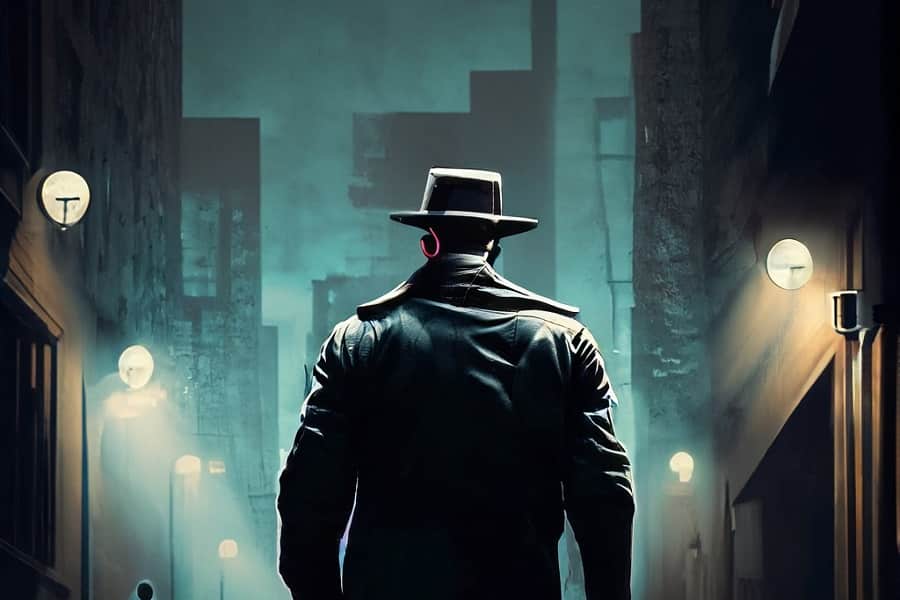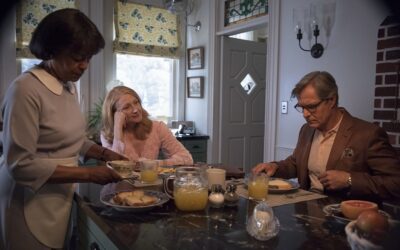
What is a Hard-Boiled Mystery?
Mystery stories have captivated readers for generations, drawing us into their intricate webs of intrigue and suspense. But, within this vast genre, there is a particularly intriguing subcategory that has developed its own dedicated following: the hard-boiled mystery. But what is a hard-boiled mystery?
Origins of the Hard-Boiled Mystery
The hard-boiled mystery genre emerged in the United States during the early 20th century, taking root amid the social and cultural upheavals of the 1920s and 1930s. This period saw the rise of crime, corruption, and lawlessness, as Prohibition and the Great Depression cast a long shadow over the nation. Amid this chaos, a new breed of detective fiction was born, reflecting the gritty realities of the era in which it was conceived.
Pioneered by authors such as Dashiell Hammett, Raymond Chandler, and James M. Cain, hard-boiled mysteries diverged from the more genteel, puzzle-oriented British detective stories popularized by authors like Arthur Conan Doyle and Agatha Christie. Instead, they embraced a darker, more realistic style, focusing on the seedy underbelly of society and the moral ambiguity of its characters.
Defining Characteristics of the Hard-Boiled Mystery
The Hard-Boiled Detective: At the center of any hard-boiled mystery is the hard-boiled detective, a character who has become an iconic figure in popular culture. Often a private investigator or a disillusioned police officer, the hard-boiled detective is characterized by their tough, cynical demeanor, and dogged determination to uncover the truth, even in the face of danger or personal hardship. These characters, like Sam Spade in Hammett’s “The Maltese Falcon” or Philip Marlowe in Chandler’s novels, are defined by their moral code, which drives them to relentlessly pursue justice, even if it means bending or breaking the law.
The Urban Setting: The hard-boiled mystery typically takes place in an urban environment, with its dark alleys, seedy bars, and shadowy corners providing the perfect backdrop for tales of crime and corruption. Cities like Los Angeles, San Francisco, and New York are often featured, with their sprawling, labyrinthine streets serving as a metaphor for the complexity and moral ambiguity of the mysteries that unfold within them.
A Gritty, Realistic Tone: In contrast to the cozy, puzzle-solving atmosphere of traditional detective stories, hard-boiled mysteries are characterized by their gritty, realistic tone. Violence, corruption, and moral decay are common themes, and the stories often delve into the darker aspects of human nature. The language used in these novels is typically hard-edged and direct, reflecting the no-nonsense attitude of the hard-boiled detective and the world they inhabit.
A First-Person Narrative: Many hard-boiled mysteries are told from the first-person perspective of the detective, offering readers an intimate glimpse into the detective’s thought processes and motivations. This narrative technique creates a sense of immediacy and immersion, drawing readers into the story and fostering a strong connection with the protagonist.
Complex Plots and Moral Ambiguity: Hard-boiled mysteries are known for their intricate, twisting plots that often involve multiple layers of deception and betrayal. The line between good and evil is frequently blurred, with characters operating in shades of gray rather than black and white. This moral ambiguity reflects the harsh realities of the world in which these stories are set, where corruption and compromise are often the norm rather than the exception. As a result, hard-boiled mysteries challenge readers to question their own moral compasses and grapple with difficult ethical dilemmas.
Femme Fatale: A staple of the hard-boiled mystery genre is the femme fatale, a seductive and dangerous woman who often plays a pivotal role in the story. These enigmatic characters are typically portrayed as intelligent, manipulative, and morally ambiguous, using their charm and allure to entrap the detective and further their own nefarious goals. The femme fatale embodies the unpredictable nature of the hard-boiled world, serving as both a tantalizing temptation and a deadly threat to the protagonist.
The Enduring Appeal of Hard-Boiled Mysteries
The hard-boiled mystery has remained a popular and enduring subgenre of detective fiction for nearly a century, captivating readers with its gritty realism, complex characters, and morally ambiguous narratives. But what is it that makes these stories so appealing, even in today’s world?
The Relatable, Flawed Protagonist: One of the most compelling aspects of the hard-boiled mystery is the relatability of its protagonists. Unlike the infallible detectives of traditional mystery stories, hard-boiled detectives are deeply flawed, often grappling with personal demons and struggling to maintain their sense of morality in a corrupt world. This vulnerability makes them more human and relatable, allowing readers to identify with their struggles and root for their success.
The Exploration of Moral Ambiguity: The hard-boiled mystery genre delves into the complexities of human nature, exploring the gray areas that lie between right and wrong. These stories challenge readers to confront their own ethical beliefs and consider the difficult choices that must sometimes be made in the pursuit of justice. This thought-provoking aspect of the genre invites readers to engage with the narrative on a deeper level, making the hard-boiled mystery a more intellectually stimulating and emotionally resonant experience.
The Gritty Realism: Hard-boiled mysteries offer a stark contrast to the genteel, puzzle-solving world of traditional detective fiction. They expose the seedy underbelly of society, forcing readers to confront the harsh realities of crime, corruption, and human depravity. This gritty realism lends the genre a sense of authenticity and immediacy, making the stories feel more relevant and impactful.
The Thrill of the Chase: At its core, the hard-boiled mystery is a thrilling, adrenaline-fueled ride that keeps readers on the edge of their seats. The intricate plots, filled with twists and turns, create a constant sense of tension and excitement as the detective navigates a world of deception and danger. The high stakes and unpredictable nature of these stories make them irresistibly engaging, ensuring that readers remain hooked from start to finish.
The hard-boiled mystery has carved out a unique and enduring place within the world of detective fiction, offering readers a darker, more complex alternative to traditional mystery stories. Defined by its gritty realism, morally ambiguous characters, and intricate plots, the hard-boiled mystery explores the depths of human nature, forcing readers to confront difficult ethical questions and grapple with the harsh realities of the world in which we live. It is this combination of intellectual stimulation, emotional resonance, and pure, unadulterated excitement that has made the hard-boiled mystery a beloved and enduring fixture of the literary landscape.
Similar Features
The Global Appeal of Noir
Nordic Noir, Southern Noir, and other Noir
Nordic Film Noir
The boundless allure of Nordic Film Noir
From Faulkner to Flynn
Tracing the Evolution of Southern Noir



